AFM 2012
9th International Conference on Advances in Fluid Mechanics
26 - 28 June 2012
Split, Croatia
Overview and Opening Address
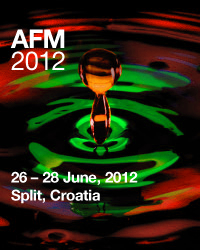
The 6th International Conference on Advances in Fluid Mechanics has recently taken place in Split, organised by the Wessex Institute of Technology with the collaboration of the University of Split in Croatia.
The meeting attracts a series of papers dealing with the most recent development in important aspects of fluid mechanics. The conference has been successfully held since 1996 where the first meeting took place in New Orleans. Since then other meetings were convened in Udine (1998), Montreal (2000), Ghent (2002), Lisbon (2004), Skiathos (2006), the New Forest (2008) and the Algarve (2010).
The field of fluid mechanics is vast and covers numerous and diverse applications. The conference covered a wide range of topics, including basic formulations and their computer modelling as well as the relationship between experimental and analytical results. The emphasis of the conference papers is on new applications and research currently in progress.
The meeting provided a forum for discussing new work on fluid mechanics and in particular for promoting the interchange of novel ideas and the presentations of the latest developments in this field.
Carlos opened the conference by explaining the work carried out by the Wessex Institute of Technology and in particular the objective of the conference programme. The Institute has over the years developed a wide network of scientific contact all over the world and collaborates with many institutions in organising highly specialised events. The conference series consists of 25 meetings per year in topics that range from heritage architecture to physical sciences and now include a number of meetings bringing together scientists and humanists.
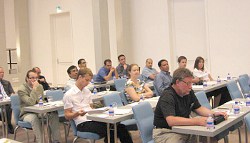
Other activities of WIT are research training at PhD level, advanced consulting for industry and scientific publications. Activities other than conferences take place in the Institute Campus in the New Forest National Park, and on site courses are organised for industry as well.
The emphasis in collaborating with industry, Carlos explained, is one of the most important characteristics of WIT work. The Institute’s Industrial Research Division has strong links with petroleum and aerospace companies, amongst others. The Institute has developed and continues to improve and support a unique computer code based on boundary elements, the method that is the trademark of WIT research. The success of the code amongst industrial users is the best validation of the importance of WIT research.
Conference Topics
The conference sessions comprised a series of topics:
- Multiphase flow
- Advanced formulations
- Computational methods
- Hydrodynamics
- Fluid Structure Interaction
- Heat and mass transfer
- Environmental fluid mechanics
Invited Presentations
A series of invited presentations helped to enhance the conference. They were as follows:‘On gauge fields in Fluid Turbulence’
by T H Moulden, University of Tennessee Space Institute, USA
‘Bénard convection with rotation and a periodic temperature distribution’
by S J D’Alessio, University of Waterloo, Canada
‘Superquadratic fluid restrictors and their applications’
by V Tesar, Institute of Thermodynamics, the Czech Republic
‘Design and testing of wind deflectors for roof-mounted solar panels’
by G V Kudav, Youngstown State University, USA
‘The role of natural convection and density variations in the solidification process of water in an annular enclosure’
by R I Bourisli, Kuwait University
‘Nonlinear diffraction of water waves: a classical perturbation method’
by M Rahman, Dalhousie University, Canada
Special Session
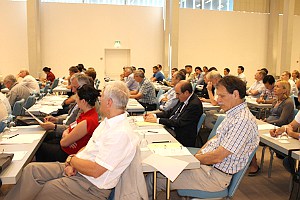
Prof Carlos A Brebbia opened the proceedings by pointing out the important results being obtained from the existing link between the University of Split and his Wessex Institute of Technology. The link between the two institutions started 15 or so years ago and began with a number of joint conferences, on a range of topics related to advances in computational methods. This collaboration resulted in three meetings held in Split in 2012, (ie Boundary Element and other Mesh Reduction Methods; Advances in Fluid Mechanics and Heat Transfer). Previous meetings took place in the Split region, including a conference on the island of Brac. Recently, Carlos pointed out, two important conferences were held at the University Institute in Dubrovnik, another beautiful location in Croatia.
Collaboration between WIT and the University of Split – Carlos said – has provided other outstanding results. The two institutions ran a Master course for a period of five years graduating in the process a substantial number of candidates, who contributed a series of outstanding final dissertations. Several of them continued their studies and have now obtained a PhD degree from the University of Wales, the validating authority of WIT.
Many papers in learned journals bear witness to the fruitful links between the two Institutions, and are the result of research collaboration. In addition, WIT Press, the publishing arm of the Wessex Institute, has published several books authored by Split researchers, including some major works by Dragan Poljak on the topic of electromagnetism, EM radiation problems and their effects on human health.
Carlos hoped that his Institute will be able to continue to strengthen its working relationship with the University of Split as well as Croatian industry and other government organisations in the region.
WIT is for instance planning some joint initiatives with the Croatian Hydrodynamics Institute, including a conference on Island Sustainability (see http://www.wessex.ac.uk/12-conferences/islands-2012.html).
Carlos ended his address by thanking the University and the City of Split as well as the county for the warm hospitality that delegates from all over the world have received in this unique part of the Mediterranean.
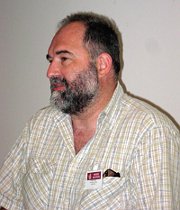
The philosophy of the School – Dragan said – is towards commercialisation, innovation and interacting with other institutions.
The next speaker was Professor Srojan Podrug, Dean of the Faculty of Engineering at the University of Split, who described in detail the different areas of interest in their Faculty and the research being carried out. This was followed by the welcoming address of Professor Tomisav Kilic, Vice Rector of the University, who referred to the considerable growth that the Institution underwent in the last few years.
Mr Vikko Havidič, Vice Governor of the county of Split, Dalmatia, mentioned the expansion plans to take place in the near future and their targets for technological development; a topic that was also included in the following address by Mr Ivan Vestič, Senior Councillor for the City of Split.
Book Launch
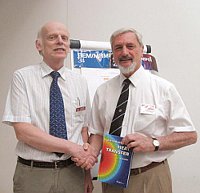
Carlos described first the scientific career of Bengt who completed his education at the renowned Chalmers University of Technology in Göteburg (MSc in Mechanical Engineering 1973, PhD in 1979 and Free Docent in 1980).
Since then he worked at Lund University, where he became a Full Professor of Heat Transfer in 1993. He is currently Head of the Department of Engineering Sciences.
His research contributions span a large number of topics as testified by the Development in Heat Transfer book series that he has been editing for WIT Press since 1995.
He is or has been editor of renowned journals and received several medals and awards, including the ASME Heat Transfer Memorial Award, and the Wessex Institute of Technology Eminent Scientist Medal.
The new book represents his achievements as a teacher and will be a most valuable learning tool for many emerging generations.
Social Occasions
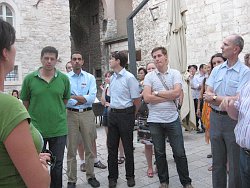
The University of Split offered a guided tour of the Diocletian Palace and the old town, followed by a reception, where a series of local specialities were offered.
There was first a guided tour of the surrounding areas of the city, describing some of the most prominent sites, its archaeological and historical past and the beautiful parks, beaches, promenades all along the coast. After this they were shown the most important sites within the Diocletian Emperor’s Palace, whose massive structure is largely intact and gives shelter to a whole range of shops, restaurants, apartments and even churches, the most spectacular of which is the Saint Dominic basilique built upon the foundations of the Emperor’s tomb. In this manner Christianity, a religion that Diocles persecuted, was to triumph over the pagan Emperor. At the end of the tour the delegates were offered a reception in the vaults of the Palace after a recital given by a Choir singing Dalmatian pieces. The reception consisted of typical Croatian dishes and delicacies accompanied by excellent local wines. The event helped to cement even further the links between all participants.
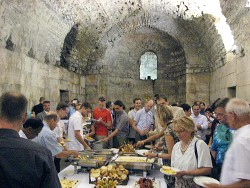
The ISAC met over dinner to discuss the success of the conference and how to improve it when it is reconvened in 2014. Several possible topics were suggested in addition to those comprised in the current conference. There were several nominations to the Committee as well as possible locations for 2014. The WIT Conference department will investigate all the locations to find the most suitable.
Closing of the Conference
The conference was closed by Carlos who thanked all participants for their contributions and reminded them that the following meeting will take place in 2014 in a location and date shortly to be decided.
Conference Proceedings
The proceedings of AFM, 608pp (Print ISBN:978-1-84564-600-4, eISBN 978-1-84564-601-1) are available from WIT Press. Orders can be placed on the WIT Press web site at www.witpress.com or by email:
Papers from the conference will also be hosted online at the WIT eLibrary as Volume 74 of WIT Transactions on Engineering Sciences (ISSN: 1746-4471, Digital ISSN: 1743-3533). For more details visit the WIT eLibrary at http://library.witpress.com


 Wessex Institute
Wessex Institute